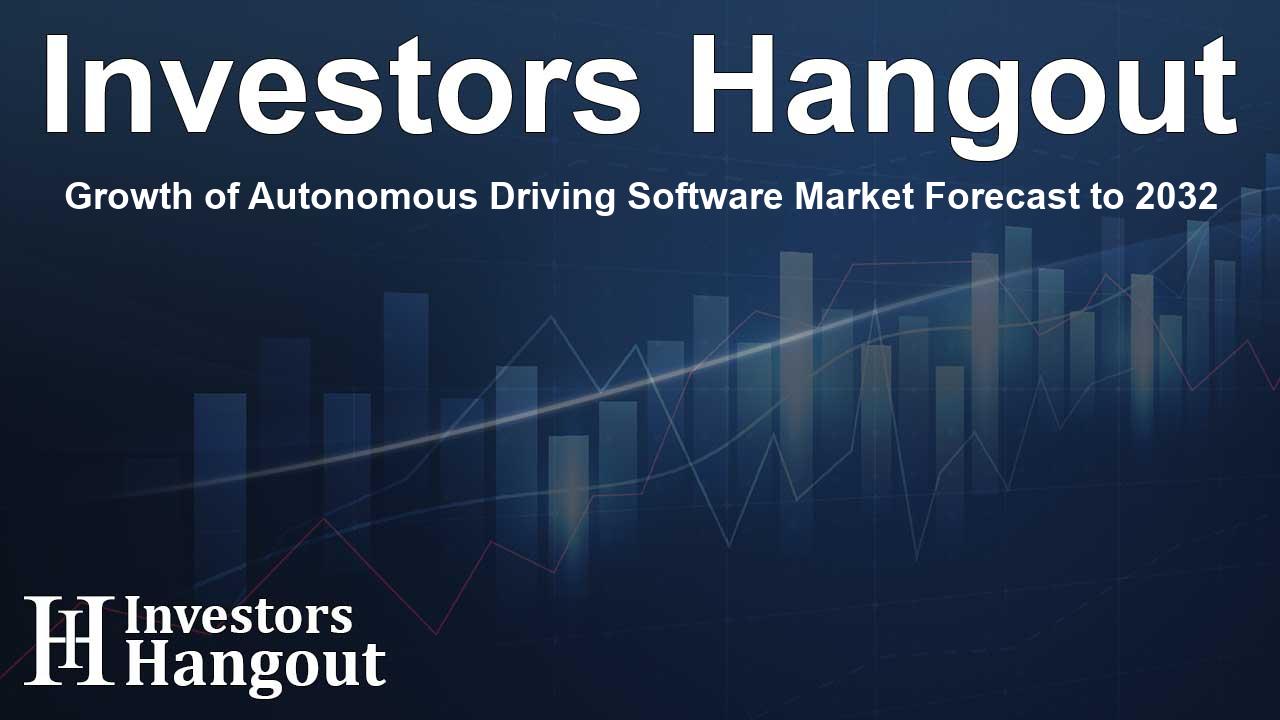Growth of Autonomous Driving Software Market Forecast to 2032

Robust Growth in the Autonomous Driving Software Market
The autonomous driving software sector is witnessing remarkable growth, fueled by increasing safety standards and advancements in connected mobility. The market was valued at USD 1.8 billion in 2023, with forecasts predicting it to reach approximately USD 5.58 billion by 2032, marking a compound annual growth rate (CAGR) of 13.58% from 2024 to 2032.
Impact of North America on the Market Dynamics
In 2023, North America played a pivotal role in this market, valued at around USD 0.5 billion. The region is projected to surge to USD 1.55 billion by 2032, thanks to substantial R&D investments, regulatory frameworks supporting autonomous vehicle testing, and quick advancements in AI and sensor technologies.
Sample Insights into Market Report
Major firms are heavily investing in developing autonomous solutions, and market reports outline projected dynamics revealing that the autonomous driving software sector will continue expanding. Consumer expectations for efficiency and safety are leading this growth trend, compelling industry leaders to innovate constantly.
Main Players in the Autonomous Driving Arena
This market showcases a range of influential players including Aptiv, Aurora Innovation, Baidu, and Waymo. These companies are at the forefront with their advanced technologies which are integral to the evolution of safe and efficient autonomous systems within vehicles. Each firm is developing specific solutions designed to enhance vehicle autonomy, reflecting distinct approaches in software and hardware integration.
Market Segmentation: Insights into the Growth Areas
The autonomous driving software market segmentation reveals various dimensions, including the level of autonomy, propulsion types, vehicle categories, and software types.
Level of Autonomy: A Closer Look
Among the levels of autonomy, Level 2 (L2) has dominated, holding a significant share of 42% of revenue due to its semi-autonomous capabilities, which include essential features like adaptive cruise control and lane-keeping assistance. Notably, Levels 4 and 5 are expected to experience remarkable expansion as vehicles move towards complete autonomy, underpinned by new technologies and regulatory evolution.
Propulsion Types: Trends and Shifts
When analyzing vehicle propulsion, internal combustion engine (ICE) vehicles accounted for 64% of the market in 2023. While ICE vehicles remain prevalent due to their longstanding infrastructure and high adoption rates, electric vehicles (EVs) are quickly catching up, projected for rapid growth due to their integration with advanced AI for autonomous capabilities.
Consumer Preferences: Passenger vs. Commercial Vehicles
Passenger vehicles captured a substantial 72% of revenue in 2023. The rise in driver-assistance features aligns well with consumer expectations, driving manufacturers to invest heavily in innovation. Meanwhile, commercial vehicles are on course for rapid growth fueled by increasing demand for logistics solutions and efficiency in freight transport.
Technological Innovations and Future Outlook
The growing complexity of autonomous systems highlights the need for robust software solutions focusing on perception and planning which saw a considerable revenue share of 43% in 2023. The evolution towards smart interiors is also notable, with interior sensing technologies quickly becoming prominent due to rising safety regulations and consumer demand for personalized vehicle experiences.
Regional Market Trends: A Global Perspective
North America currently leads in this market segment, with substantial contributions from the U.S. automotive sector. Looking forward, the Asia-Pacific region is emerging as a vibrant market. Collaborative initiatives, urbanization, and government incentives in countries like China and Japan encourage swift growth in smart mobility and autonomous driving technologies.
Frequently Asked Questions
What is driving the growth of the autonomous driving software market?
The growth is primarily driven by advancements in AI technologies, increasing safety demands, and significant investments in research and development.
How is the market segmenting?
The market is segmented by levels of autonomy, propulsion types, vehicle categories, and types of software.
Who are the major players in the market?
Key players include Aptiv, Aurora Innovation, Baidu, Waymo, and Tesla among others, each contributing to various aspects of autonomous vehicle technology.
What trends are shaping the autonomous vehicle landscape?
Increasing consumer demand for efficient transportation systems and advancements in smart technology are significant trends affecting the landscape.
What role does North America play in this market?
North America holds a leading position in the market due to extensive R&D investments and favorable regulatory environments for testing autonomous vehicles.
About The Author
Contact Hannah Lewis privately here. Or send an email with ATTN: Hannah Lewis as the subject to contact@investorshangout.com.
About Investors Hangout
Investors Hangout is a leading online stock forum for financial discussion and learning, offering a wide range of free tools and resources. It draws in traders of all levels, who exchange market knowledge, investigate trading tactics, and keep an eye on industry developments in real time. Featuring financial articles, stock message boards, quotes, charts, company profiles, and live news updates. Through cooperative learning and a wealth of informational resources, it helps users from novices creating their first portfolios to experts honing their techniques. Join Investors Hangout today: https://investorshangout.com/
The content of this article is based on factual, publicly available information and does not represent legal, financial, or investment advice. Investors Hangout does not offer financial advice, and the author is not a licensed financial advisor. Consult a qualified advisor before making any financial or investment decisions based on this article. This article should not be considered advice to purchase, sell, or hold any securities or other investments. If any of the material provided here is inaccurate, please contact us for corrections.
